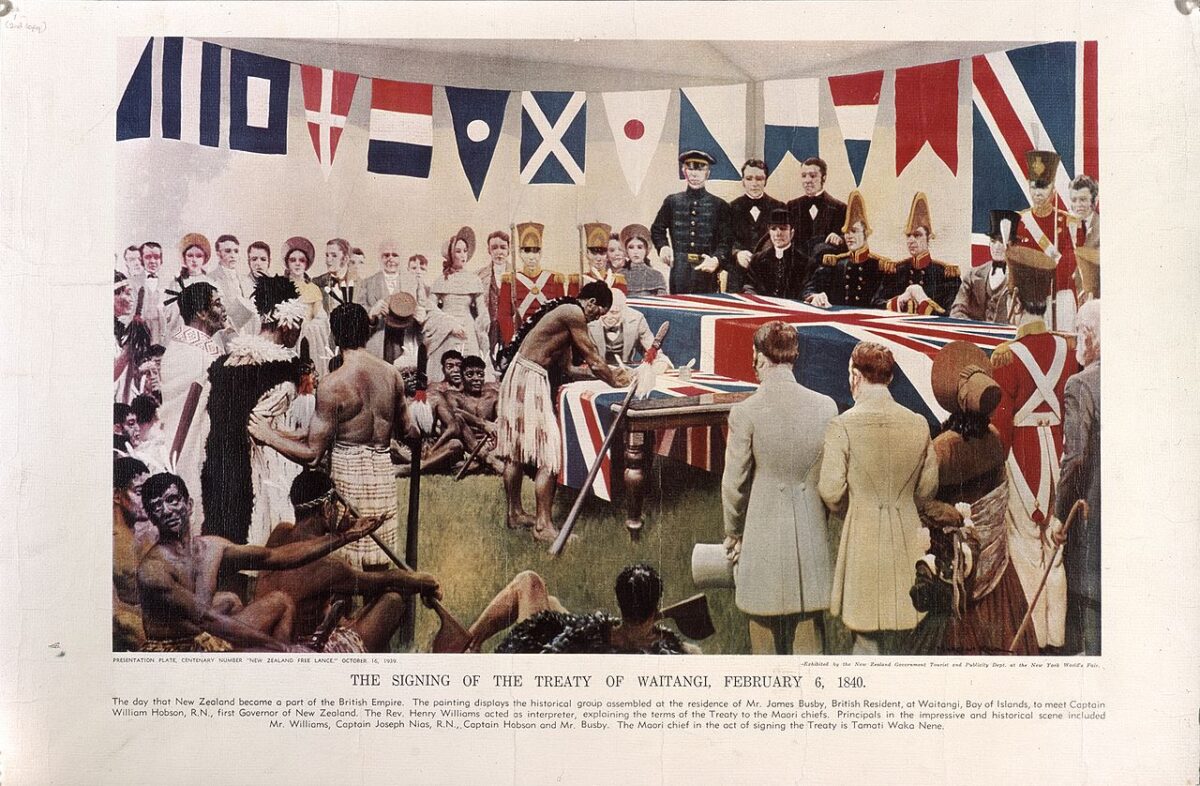Reuben Peter Chapple
The partnership fallacy came about because the 1984 Labour Government placed references to “the principles of the Treaty of Waitangi” into key legislation that it passed. These references had first appeared in Section 6 of the Treaty of Waitangi Act 1975, but lay unnoticed and dormant until included in the State-Owned Enterprises Act 1986, which at Section 9 states:
“nothing in this Act shall permit the Crown to act in a manner that is inconsistent with the principles of the Treaty of Waitangi.”
Richard Prebble was Minister of State-Owned Enterprises in the Fourth Labour Government when the Bill which became the SOE Act was in its final drafting stage. Prebble wanted to sell off a number of state-owned enterprises he’d identified as suitable to be privatised. Labour’s Maori MPs were becoming increasingly resistant to this proposal, which they feared would open the door to the selling off of substantial Crown landholdings, thus preventing them from being applied to future Treaty settlements.
To hose down these concerns, Prebble’s colleague, Attorney-General Geoffrey Palmer, inserted the wording quoted above into the new State-Owned Enterprises Act. By Prebble’s retrospective account, Palmer told him at the time that the clause was meaningless, would never apply to anything, and was just a way to get Labour’s Maori MPs off his back.
What many would regard as a deliberate failure to define these “principles” in statute then allowed the Waitangi Tribunal and activist judges on the Court of Appeal to usurp the proper law-making function of Parliament.
The tricky Palmer, a Victoria University of Wellington Law Professor before going into politics, was likely to have been well aware of what he was doing. His supposedly meaningless clause handed judicial activists the opportunity to make far-reaching rulings that the electorate would never have accepted had they came from politicians. Labour could then turn around and blame the judges, thus washing its hands of responsibility for outcomes it had actually wanted to promote in the first place.
While this dodge may have fooled low information voters, the New Zealand Parliament is our supreme source of law, not the Courts. Had the Fourth Labour Government been truly unhappy about the way in which liberal judges fell over themselves to flesh out the “principles” clause, it could have appealed the ruling to a higher Court, repealed the clause altogether, or amended it to provide firm direction to the Judiciary.
The Appellate Court in the relevant case would have been the Privy Council, an overwhelmingly conservative body known throughout the Western world for interpreting the law according to law and precedent, rather than according to the social and political opinions of its constituent judges.
Thousands of kilometres away in England, the Law Lords might be expected to have been above the trendy Treatyism prevailing in New Zealand, and to have made the correct ruling. This would have been to strike down the judicial adventurism of the New Zealand judges, and to refer the matter back to the New Zealand Parliament for proper clarification in statute.
No prizes for guessing why Helen Clark’s Fifth Labour Government later abolished appeals to the Privy Council, thereby rendering New Zealand’s highest judicial body a local one.
The partnership myth entered the public square through an erroneous decision of the Court of Appeal in a 1987 case involving the New Zealand Maori Council. It is founded upon what researcher, Alan Everton describes as:
“nothing more than the opinion of five judges, who combined a lamentable ignorance of New Zealand history with a willingness to ignore the constitutional principle that they were appointed to apply the law, not make it.”
The New Zealand Maori Council had asked the Court of Appeal whether the government’s plans to transfer land to state-owned enterprises breached the principles of the Treaty of Waitangi. To answer that question the Court took it upon itself to decide what those principles were.
The Court of Appeal’s proper response in this matter would have been to reserve its decision, then ask Parliament to define in statute how (if at all) “the principles of the Treaty of Waitangi” differed from its simple black letter clauses. Yet the President of the Court of Appeal, Cooke J. managed to state in his ruling that “The Treaty signified a partnership between races …”
He went on to pepper the balance of his ruling with a raft of other such references and concluded:
“[the Treaty] principles require the Pakeha and Maori Treaty partners to act towards each other reasonably and with the utmost good faith.”
The notion that the Treaty established a partnership was independently agreed to by all five members of the Court of Appeal, though expressed in somewhat different terms by each. More insidiously, the Court took the view that, to use Cooke J’s words:
“The Treaty should be seen as an embryo, rather than as a fully developed set of ideas …”
This “living document” approach taken by the Court of Appeal’s activist judges effectively turned the Treaty’s black letter clauses into a kete (flax basket) for anything that Maori activists wanted to lay subsequent claim to.

